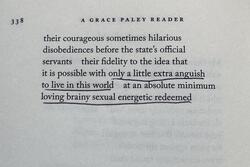Women and Tallit
Why do some women wear Tallit? Why shouldn’t women wear Tallit? What’s the big deal?
If you’re like me, you probably haven’t spent a lot of time pondering these questions. As someone who falls somewhere outside of regular observance, a tallit, or prayer shawl, isn’t usually on the forefront of my thoughts. (Even defining a tallit required a quick search of myjewishlearning.com.)
Last week I was lucky enough to join hundreds of Jewish educators at NewCAJE, a peer led conference that brings together educators from all walks of Jewish life. One of the highlights of my time at the conference was attending a session led by Ronni Ticker entitled “Women of the Wall- What’s the Big Deal?”
What’s the big deal, indeed! The Women of the Wall have struggled for almost 25 years to pray at the most holy site in Jerusalem. The movement has always fascinated me, but I’ll admit that I haven’t done my due diligence in terms of research and learning. There was—and remains—much for me to discover. What I knew about the group could be summed up quite easily from my own experiences at the Western Wall. I’ve struggled in the past with feeling unequal—which has felt more like the political equivalent of putting baby in the corner than an affront on my religious freedom. At NewCAJE Ronni asked those of us at her session to take a look at Israeli law. If Israeli law protects religious expression without respect to race, gender or creed— as it clearly does—why are these women arrested and detained?
The answer, it appeared, isn’t so easy to understand. During Ronni’s session Jewish texts were presented and examined, as the texts of our tradition are at the root of the struggle to allow women to wear tallit, to wrap tefillin and to read from the Torah. We broke into pairs and began to sort through the texts. Yet for all the intellectual discourse in the room, I couldn’t take my eyes off of one woman who stood in front of the room to demonstrate how to wear a Tallit.
As she rocked back and forth, she caressed the fabric around her shoulders. Her hands moved in a way that was somehow both unaware and purposeful. She moved as if she were dancing, she smiled as if she were floating. When she returned to her seat she whispered to me, “it’s as if G-d was hugging me.”
In that one moment the politics of the debate melted away. I found myself questioning what I had considered to be a movement, realizing that this wasn’t about a fight for equality or a rally for politics. The issue at the heart of the Women of the Wall was a woman swaying silently with G-d. And I'm not sure anyone has the right to tell her she can't.








In fact, the Talmud says specifically that women are required to wear a tallit, just as men are, but the rabbis exempted women because they are not free agents, as they are subject to their husbands' orders. Today when women are no longer considered the subjects of men, there is no reason for this exemption.
In reply to <p>In fact, the Talmud says by Ron Wegsman
That is false, women are not supposed to wear a tallis because it is considered a male garment which falls into the sin of cross-dressing. It also causes arguments between Jews which is also a sin.